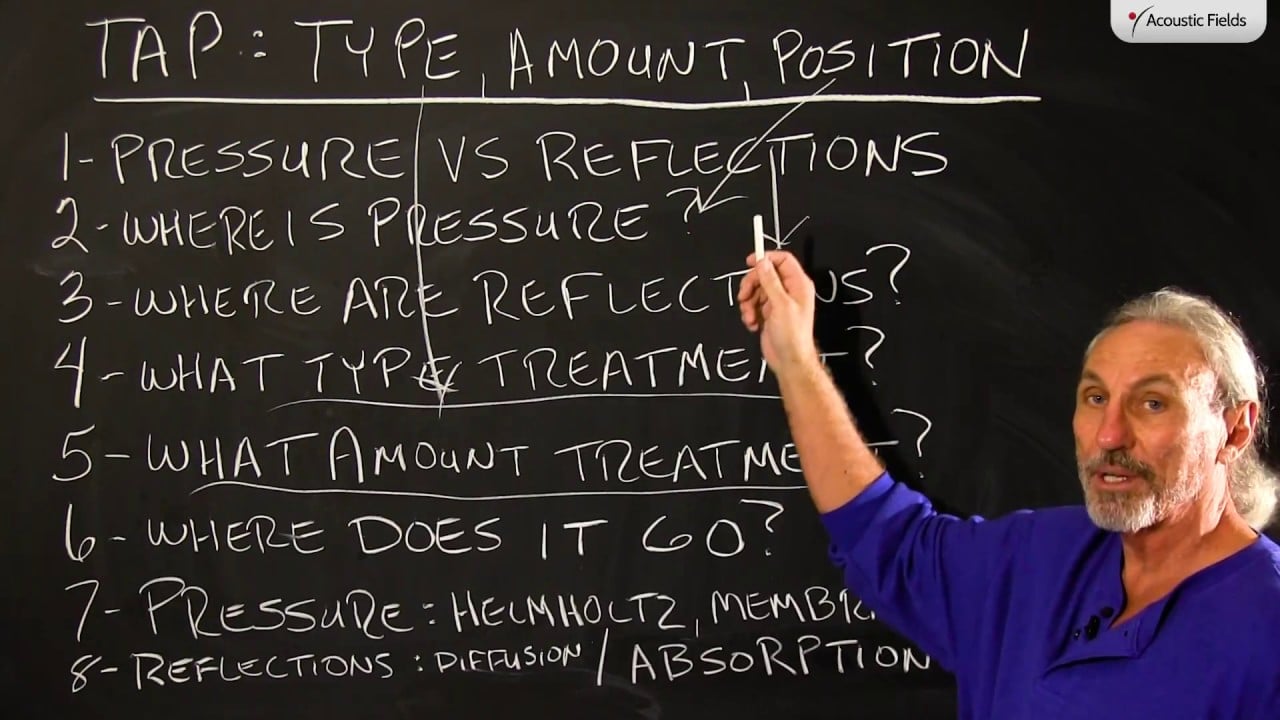I’ve come up with an acronym, I think it’s going to help us. What is the acronym? It’s called T.A.P., it stands for type, amount and position and this is all in relation to treatment, absorption and diffusion technology. I think people have a lot of misconceptions about the two types of technology, I know they have a lot of misconceptions by how much they need and where to put them. So let’s use tap as our acronym for type, amount and position and walk through some of the steps we need to walk through in order to determine the answers to those.
We know from past videos that pressure and reflections and small rooms are two main issues so we need to define where the pressure is because that’s our position, where are the reflections if we’re talking about reflections, what type of treatment we’re going to use and then what amount of treatment we’re going to use. So each type of problem, each type of pressure problem, each type of frequency within that pressure problem and each type of reflection is going to need the appropriate treatment. So we have to figure out all of the areas that we need to treat, where does it go, what type we’re going to use and how much, that’s the key, a lot of people don’t understand the quantities that you need.
So we know with pressure, Helmholtz, membrane, diaphragmatic we’ve walked through that many times in videos, I won’t go through it in this video but these are our three types of devices for pressure and then with reflections we have diffusion and absorption. Now we know with absorption we’ve got rates and levels that we have to be careful about, with diffusion we have distances to the listening position from the speakers to the listening position, from the rear wall to the listening position, front wall, side wall, so all of that has to be taken into consideration. So back to our acronym, type, amount and position, if we’re going to apply that to diffusion what type we are going to use, quadratic is our favorite because it meets all the criteria for a diffused sound field.
How much, where are we going to put it… All those answers need to be addressed, those have to be calculated, you can’t just guess and you can’t just say well I have some space here I’m going to put a diffuser which I hear a lot. The first question you’re going to get from me is why and if you can’t answer that then I know that you don’t know what you’re doing in that area so we need to be very really careful. So tap is our new acronym, type, amount and position and it applies to treatment and I want you to ask yourself that and everything you’re thinking about doing to your audio rooms.
—
This is an unedited transcript from our video series from Acoustic Fields. There will be some errors in grammar and sentence structure that occur during this translation process.
For complete understanding and comprehension, please view the video which is included in this text. For any additional information regarding this topic or others relating to room acoustics, please contact us directly at:
P: 520 – 392 – 9486








hi
I have submitted my name for free acoustic guide download. I have checked my mail as requested to click for confirmation. haven’t received the mail yet.
some assistance will do please.
K, you can download the acoustics guide and our other eBooks by logging in and heading to the “Academy” tab in the navigation. Next click on “ebook downloads” to see the list of available downloads. Hope that helps!